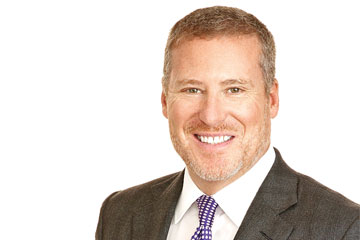
Defendants should be completely excluded from carriage motions as part of a broader overhaul to the process for selecting class counsel, according to one of the lawyers on the losing side of the recent bruising battle to prosecute a price manipulation claim against a number of German automakers.

Defendants should be completely excluded from carriage motions as part of a broader overhaul to the process for selecting class counsel, according to one of the lawyers on the losing side of the recent bruising battle to prosecute a price manipulation claim against a number of German automakers.
In Quenneville v. Audi AG, Ontario Superior Court Justice Paul Perell pointed out that one of the problems with carriage motions “is that defendants feast off them, and Class Counsel make arguments that at the certification motion they will submit are out of bounds.”
“That dysfunctional phenomena occurred in the case at bar,” Perell added as he awarded carriage to Harrison Pensa LLP and Strosberg Sasso Sutts LLP, shutting out a partnership among Koskie Minsky LLP, Paliare Roland Rosenberg Rothstein LLP and Siskinds LLP in a “photo-finish” that the judge said left little to choose between the two proposed sets of class counsel.
But Perell also lamented the current practice on carriage motions, which he said turns them “into a blood sport of lawyer-bashing,” as “gross and not helpful.”
“Unfortunately, it has become conventional in a carriage motion for the rival Class Counsel to extol their own virtues and to badmouth their rival,” he added in his decision.
“I think it would make sense to change the process for assigning carriage, whether it’s done judicially or via a legislated fix,” says Ren Bucholz, a lawyer with Toronto-based Paliare Roland Rosenberg Rothstein, who appeared on the motion.
“One of the things we should consider is whether carriage motions should be held in camera. I’m sure defendants would say it’s a violation of the open court principle,” he says.
David Wingfield, a Toronto-based partner with Strosberg Sasso Sutts, who argued the case for the victorious consortium, agrees that carriage motions put prospective class counsel in an awkward position due to the presence of defendants.
“If you have a motion that involves different views of the best approach, it’s hard not to develop those arguments fully, but it has to be done in their full view,” he says, adding that some defendants even like to participate in the carriage motion.
For example, in the recent motion to decide carriage of the alleged bread price-fixing class action, also won by a group including Strosberg Sasso Sutts, the defendants expressed a preference for the losing consortium, prompting Justice Ed Morgan to remark in David v. Loblaw; Breckon v. Loblaw that a “more cynical person might think that the Defendants simply prefer the more passive of the two competing class counsel groups over the more proactive group.”
Wingfield says he would also welcome a reformulation of the test for awarding carriage, with a smaller number of factors focused on the desire of counsel to advance the class action and the sophistication of their case theory.
“I would certainly support the concept that the 16-part test should be reduced to something far more limited and objective, and I think this decision points in exactly that direction,” agrees his co-counsel in Quenneville, Jonathan Foreman, a partner with London, Ont. firm Harrison Pensa.
In his decision, Perell suggests a number of the 16 factors have become “dysfunctional” and could effectively be dispensed with. For instance, he said the factor of the “quality of proposed class counsel” threatens to instigate a “beauty pageant or a cockfight” and should only rarely be a significant consideration in awarding carriage.
In addition, he suggested that law firms seeking carriage in the future should hire independent counsel to argue the motion.
But James Orr, a class action lawyer with Affleck Greene McMurtry LLP, says he’s not so sure about the idea.
“Unless the goal is full employment for Toronto lawyers, I would disagree,” says Orr, who notes that the courtroom for his last carriage motion could barely accommodate all the lawyers involved. “There were probably 20 or 30 gowned.”
The competing counsel in Quenneville launched their actions within a week of one another following a July 2017 report in a German magazine alleging that Audi, BMW, Daimler, Porsche and Volkswagen had all engaged in an anti-competitive scheme to gain an advantage over non-German competitors between 1990 and 2016.
The article claims they collaborated on the design, development, engineering and marketing of luxury vehicles, characterizing the alleged arrangement as monopoly-like rather than a direct conspiracy to fix prices.
After trying and failing to come to a consortium agreement, the two groups moved toward a carriage motion to settle the issue. However, at the same time, the team led by Harrison Pensa and Strosberg Sasso Sutts delivered a motion record for certification, including an expert report.
Perell described the move as “ill-advised” considering carriage had not yet been settled, but he also criticized the decision of the competing team of counsel to attack alleged deficiencies in the expert report in front of the defence.
Ultimately, Perell concluded that case theory was the “most-weighty factor for determining who should have carriage” and plumped for the “more creative and more developable case theory” proposed by Wingfield and his team.